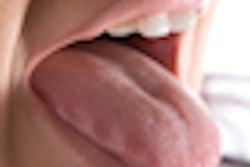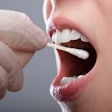
A doctor had to remove a fingernail that became lodged in between the gum tissue and front tooth of a 10-year-old boy, highlighting the need for clinicians to monitor and discourage nail biting, according to a case report published on June 7 in BMJ Case Reports.
Clinicians should consider fingernail biting and possible nail impaction when young children and adolescents present with gingival swelling or injury. These patients also should be scheduled for regular follow-ups with a team of clinicians to ensure the habit is under control to avoid future injuries and social and psychological impairments, according to the authors.
"Due to possible underlying psychological behavioral issues, a multidisciplinary team approach including the primary care physician, dentist and behavioral health specialist is needed to manage children with persistent fingernail biting habit," wrote the group, led by Daffer Ghanim, MD, from the department of family medicine at the University of Colorado School of Medicine.
More than a bad habit
Fingernail biting is a common habit among children, with 12% to 45% of them engaging in it. Nail biting starts at about age 4 and reaches peak prevalence during the ages of 10 to 18. The habit is associated with psychosocial conditions, such as anxiety, attention deficit hyperactivity disorder, obsessive-compulsive disorder, and emotional stress. It also may be linked to attention-seeking behavior.
Though most are aware of the prevalence of nail biting, there are limited reports on the diagnosis and treatment of nail biting-associated injuries. Chewing on fingernails can result in numerous complications, including gum tissue damage, infections, bone or tooth structure damage, and systemic disease, including gingival abscess formation.
A healthy 10-year-old
The boy was experiencing discomfort in his mouth, so he was brought to the doctor. He admitted that he was biting his fingernails and he thought one had gotten stuck in his mouth. A parent confirmed that he occasionally bit his nails and that the child had no medical or mental health history.
The doctor discovered an off-white color and extra tissue, which turned out to be the bitten nail, on the lingual aspect of the boy's gingival sulcus during a physical exam. The clinician used forceps to remove it. The patient, who didn't receive anesthetic, tolerated the procedure well, according to the authors.
Handling cases of nail biting
In cases of gingival injury or infection secondary to fingernail biting, clinicians should take a comprehensive dental history and determine any patient history of inserting or ingesting foreign objects. If a foreign object can't be seen, dental imaging can help locate it. However, imaging will not detect a fingernail, so a thorough visual inspection -- including an evaluation of the full dentition, gums, oral cavity, nails, and nail beds -- is key to diagnosis and treatment. Follow-ups also are important, according to the authors.
"Treatment of nail impaction includes mechanical removal of the foreign object, oral hygiene instructions, psychological support, possible dental referral and close follow-up to monitor reoccurrence," they wrote.




















